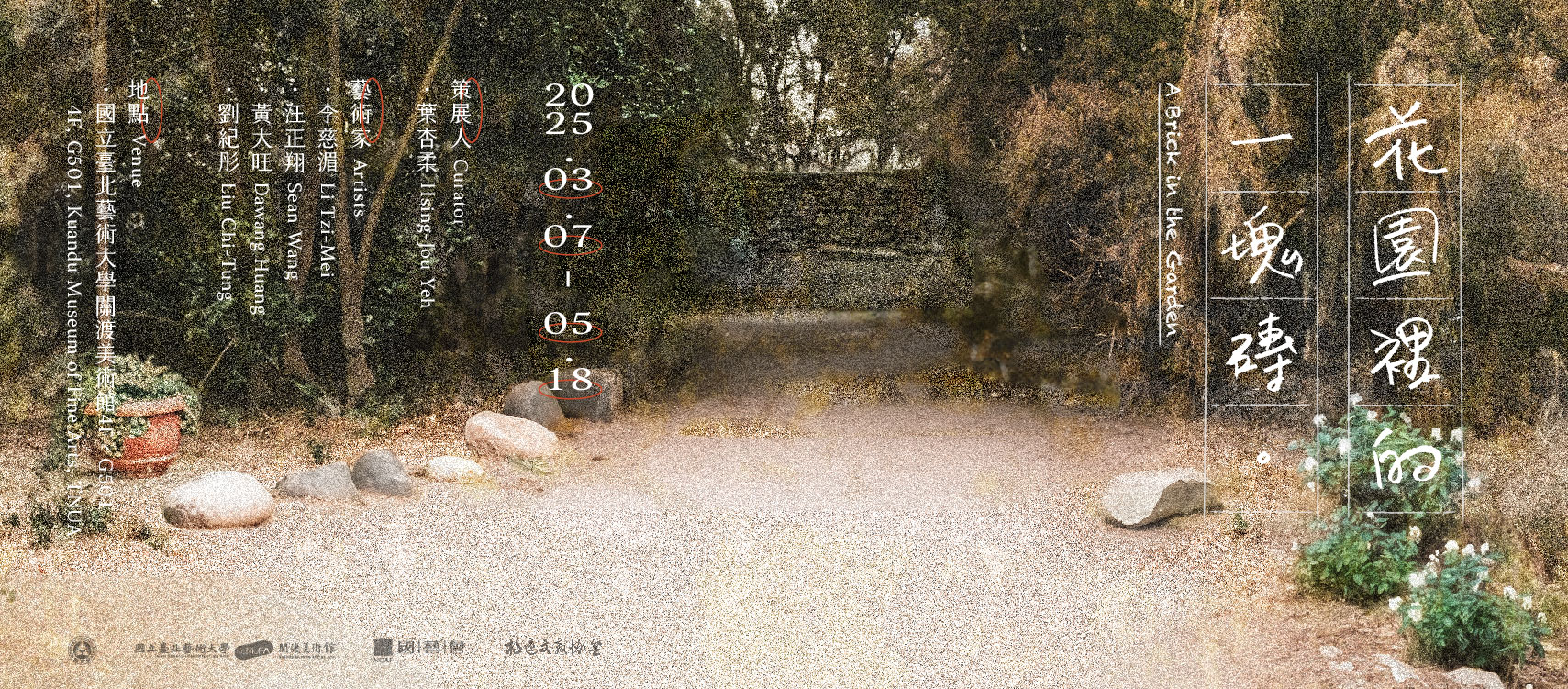From 1962 to 1981, literary writer and socialist activist Yang Kui, along with his wife Yeh Tao and his family, lived on the hill of Mt. Dadu, plowing up Tunghai Garden. It stood on a rocky and barren hillside, and after their farming and flowering it flourished with bushes and blossoms. Yang Kui called it his “poetry well-wrought with hoe and shovel.” Living on what they planted and setting up a public space was the couple’s route to social movement before WWII. In 1920s, they participated in peasant movement. From 30s to 40s, they organized papers and publication to meet their political-socialist deeds. In the latter half of the 70s, literati and dissidents around the island visited Yang Kui at Tunghai Garden. They ate and drank, talked and smoked, sometimes laboring on the farm together. In the period of KMT Martial Law, Tunghai Garden turned out to be a rare forum for meeting and gathering.
The 1976 article on papers “I Have a Brick” reveals Yang Kui’s imagination about Tunghai Garden: a public cultural-base, it might be a gallery, a library, or a folk-arts foundation. Indeed, during 70s in Tunghai Garden, Yang Kui got back to writing, his meeting with the “Return-to-Reality” youth (in Hsiau A-Chin’s term) gave birth to not only lots of “life photos” but also a literary album inspired by the movement “Sing Our Own Songs.” It’s a pity that the garden went ruins after the old gardener left. However, the plowing and flowering in the 70s bear fruits for the following generations. In the 90s, Crystal Records released another literary album “Yang Kui: Mother Goose Gets Married” and Avanguard Publishing House produced a literary documentary “Yang Kui”. Through sight and sound, Taiwan literature underwent a new wave of “media turn.”
Based on the preceding exhibition “The Foolish Old Man Removes the Mountains: The Sounds and Images of Yang Kui,” this exhibition “A Brick in the Garden” re-search Tunghai Garden in its 60s and 70s. It portrays Yeh Tao, from a “Lady Riot” on barricade to “Flower Seller Granny” in the garden. It spotlights Yang Kui’s taking roots and routes in the garden. When the martial law loosened, Yang Kui re-emerged ironically from a political-prisoner of White Terror to an old hero of anti-Japanese Colonialism. In such a crevice, he built an anti-panopticon “social-dwelling” with bricks, opening up a field for literature, images, and songs on a garden. Yang Kui’s return to writing in the late 70s was at the same time his re-casting himself into the society, in the form of a brick for intellectual and social construction. From then on, though the garden is nevermore, Yang Kui’s legacy is never lost. It’s there, with layers, for us to dig up more.
Footnotes:
[1] Yang Kui, "I Have a Brick," Central Daily News, 1976/10/21, the 10th page. According to a sentence in this article "Eight years ago, when we started to set a garden on this rocky hill," it’s presumable that Yang Kui wrote this essay much earlier.
[2] Hsiau A-chin. (2010) “Return to Reality: Political and Cultural Change in 1970s Taiwan and the Postwar Generation”. Taipei, Institute of Sociology, Academia Sinica.
